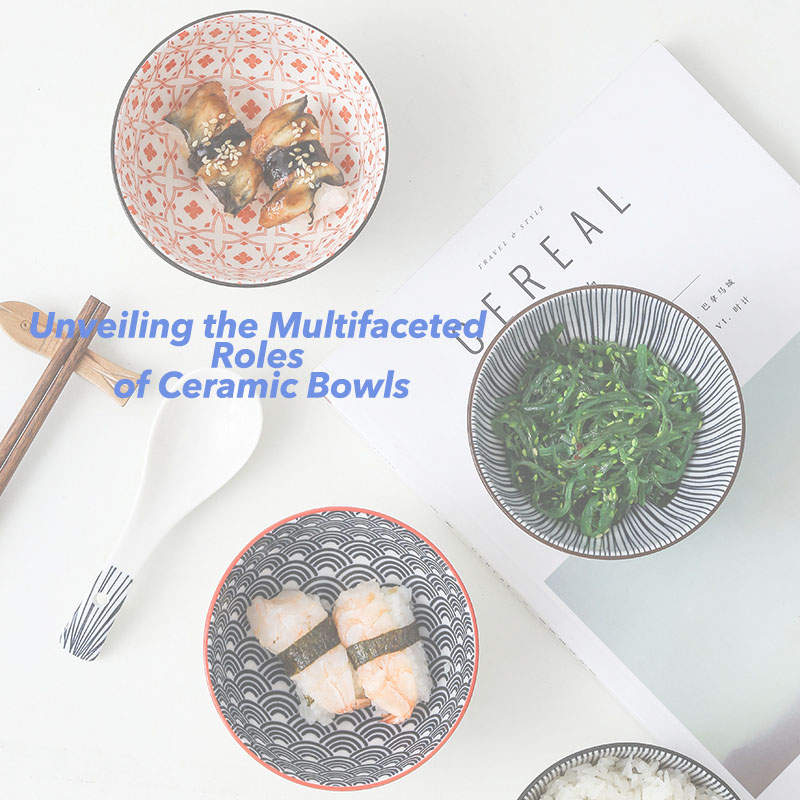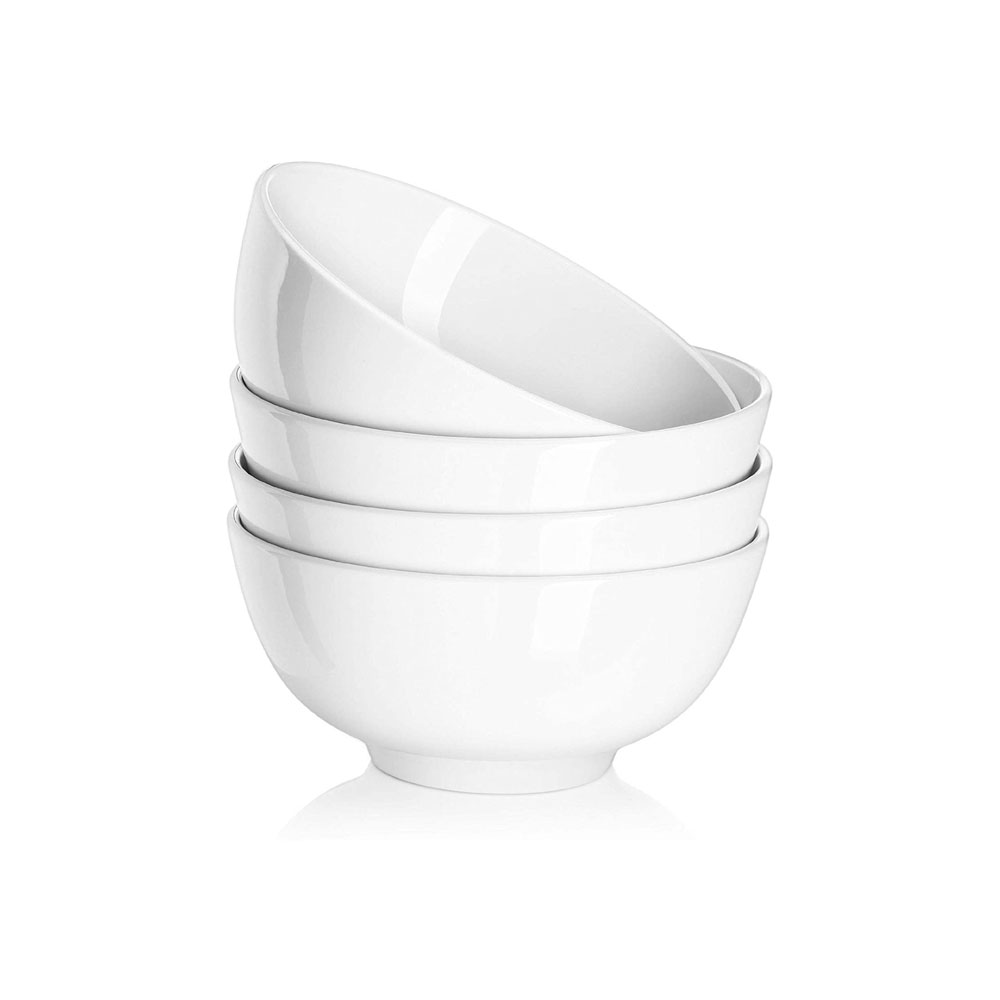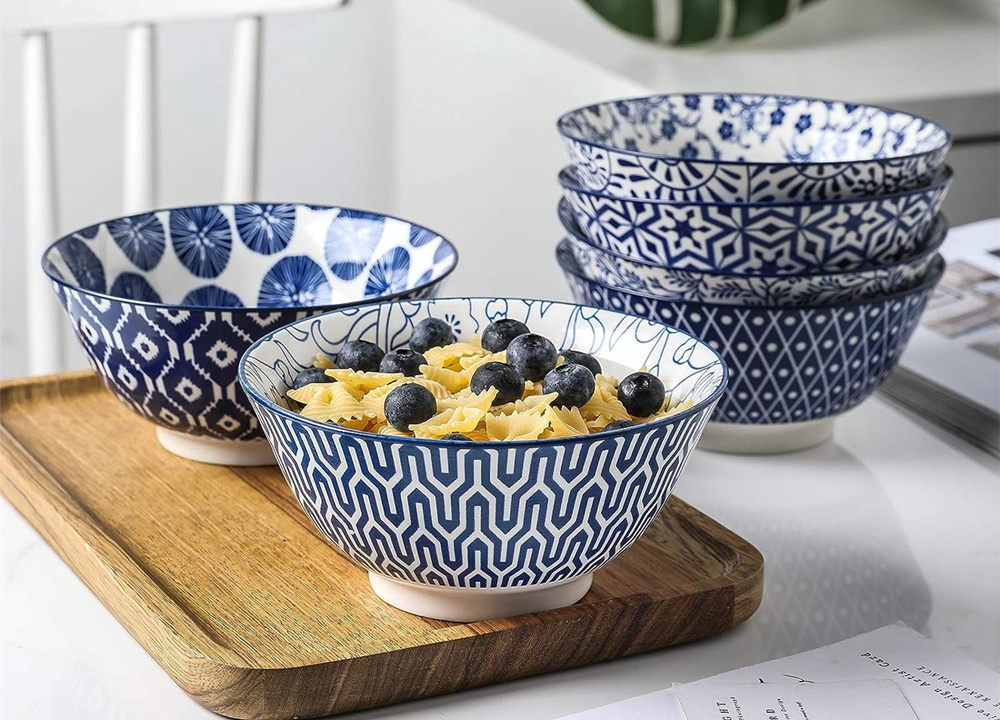Unveiling the Multifaceted Roles of Ceramic Bowls
Time of issue: 2024-02-29 11:03:29- Origins and Evolution: Tracing the Roots of Ceramic Bowls
- Functions and Utility: Exploring the Practical Applications of Ceramic Bowls
- Cultural Significance: Unraveling the Symbolism and Rituals Surrounding Ceramic Bowls
- Artistry and Craftsmanship: Celebrating the Artistic Merits of Ceramic Bowl Production
- Conclusion:

In the bustling rhythm of modern life, the simplicity of everyday objects often conceals a wealth of history, culture, and practicality. Among these unassuming essentials stands the ceramic bowl, a ubiquitous vessel found in kitchens, dining rooms, and cultural artifacts around the globe. In this extensive exploration, we delve into the multifaceted roles of ceramic bowls, unraveling their significance in human culture and society.
Origins and Evolution: Tracing the Roots of Ceramic Bowls
The history of ceramic bowls is deeply intertwined with the evolution of human civilization. Dating back to ancient times, early societies recognized the utility of clay as a versatile medium for crafting vessels to contain food and liquids. Archaeological findings from regions spanning Mesopotamia, China, and Mesoamerica provide insights into the diverse forms and functions of early ceramic bowls.
According on Early Cities of the Ancient Near East, In ancient Mesopotamia, the cradle of civilization, ceramic bowls were meticulously shaped by skilled artisans using rudimentary techniques. These vessels served not only as utilitarian objects but also as symbols of status and wealth, often adorned with intricate designs and inscriptions depicting scenes from daily life or mythological narratives.
Similarly, in ancient China, ceramic bowls emerged as essential components of daily life, reflecting the values and aesthetics of different dynasties. From the simple elegance of Tang dynasty white porcelain to the vibrant colors of Ming dynasty pottery, each era left its mark on ceramic production, shaping the evolution of bowl design and craftsmanship.
According to WHEELANDCLAY, Across the vast expanse of Mesoamerica, civilizations such as the Maya and Aztec revered ceramic bowls as sacred objects imbued with spiritual significance. Used in rituals, ceremonies, and feasts, these vessels served as conduits for offerings to deities and ancestors, forging connections between the earthly and divine realms.
Functions and Utility: Exploring the Practical Applications of Ceramic Bowls
At its core, the ceramic bowl fulfills a myriad of practical functions in everyday life. From serving as vessels for food preparation and consumption to acting as decorative accents in interior design, its versatility knows no bounds.
In the kitchen, ceramic bowls serve as indispensable tools for mixing, kneading, and storing ingredients. Their smooth, non-reactive surfaces make them ideal for blending flavors and textures without imparting unwanted odors or tastes. Whether whisking eggs for a fluffy omelet or tossing salad greens with tangy vinaigrette, ceramic bowls provide a reliable canvas for culinary creativity.
Moreover, the heat-retentive properties of ceramic make it an ideal material for serving hot soups, stews, and porridges. Unlike metal or plastic alternatives, ceramic bowls maintain the temperature of their contents, ensuring that each spoonful is savored at its optimal warmth.
Beyond the confines of the kitchen, ceramic bowls find myriad applications in various aspects of daily life. In dining rooms and restaurants, they serve as elegant vessels for presenting meals, enhancing the visual appeal of dishes and elevating the dining experience. Their graceful curves and smooth surfaces invite tactile exploration, inviting diners to engage with their food on a sensory level.
Can you steam ceramic bowl?

Before we dive into the specifics of steaming, it's essential to grasp the basic properties of ceramic materials. Ceramic bowls are typically made from clay that has been fired at high temperatures to achieve durability and strength. While ceramics are known for their heat resistance, not all types of ceramic are suitable for extreme temperature variations.
When it comes to steaming, the primary concern is thermal shock, which occurs when a material is subjected to rapid changes in temperature. While ceramic bowls can generally withstand moderate heat, sudden exposure to intense heat, such as that produced by steam, can potentially cause them to crack or shatter.
Bowl Composition: Consider the type of ceramic used to make the bowl. High-quality, vitrified ceramics are more likely to withstand thermal shock compared to porous or low-fired ceramics.
Thickness and Quality: Thicker, well-made ceramic bowls are better equipped to handle fluctuations in temperature. Inspect the bowl for any signs of imperfections or thin spots that may compromise its structural integrity.
Preheating: To minimize the risk of thermal shock, it's advisable to preheat the ceramic bowl gradually before introducing it to steam. Placing the bowl in a warm oven or filling it with hot water prior to steaming can help acclimate it to the heat.
Steam Source: Consider the source of steam used for cooking. While traditional stovetop steamers may generate intense heat, electric steamers or gentle methods of steaming, such as using a bain-marie, may pose less risk to ceramic bowls.
Avoiding Abrupt Temperature Changes: Be cautious when transferring ceramic bowls from extreme heat to cold surfaces, such as placing a hot bowl on a cold countertop. Use heat-resistant pads or trivets to cushion the bowl and prevent rapid temperature fluctuations.
Can ceramic bowls go in the oven?
Ceramic bowls, like other ceramic items, vary in their composition and firing process, which influences their heat resistance. High-quality ceramic bowls that have been vitrified—transformed into a glass-like state during firing—are generally more heat-resistant than low-fired or porous ceramics.
Bowl Composition: Assess the type of ceramic used to make the bowl. High-quality, vitrified ceramics are typically oven-safe and can withstand high temperatures without cracking or shattering. However, bowls with decorative glazes or metallic embellishments may not be suitable for oven use, as these coatings can be damaged by heat.
Manufacturer Guidelines: Check the manufacturer's guidelines or packaging for information on oven safety. Many ceramic bowls are labeled as oven-safe, indicating that they have been tested and certified for use in conventional ovens up to a certain temperature.
Temperature Limitations: Be mindful of the temperature limitations of your ceramic bowl. While most oven-safe ceramic bowls can withstand temperatures up to 400-500°F (200-260°C), exceeding these limits may cause damage or failure.
Precautions: Take precautions to minimize the risk of thermal shock when using ceramic bowls in the oven. Avoid placing cold bowls directly into a hot oven, as sudden temperature changes can cause cracking. Instead, preheat the oven gradually with the bowls inside or allow the bowls to come to room temperature before baking.
Cultural Significance: Unraveling the Symbolism and Rituals Surrounding Ceramic Bowls
In addition to their practical utility, ceramic bowls hold profound cultural significance in societies around the world. From ancient rituals to contemporary customs, these vessels are imbued with symbolism and meaning that transcend their material form.
In many cultures, ceramic bowls are associated with themes of abundance, nourishment, and communal unity. In traditional Chinese culture, for example, the act of sharing a meal from a common bowl symbolizes familial harmony and filial piety, reinforcing social bonds and obligations.
Similarly, in Japanese tea ceremonies, ceramic bowls known as chawan play a central role in the ritualized preparation and consumption of matcha tea. These bowls are revered for their simplicity, elegance, and tactile beauty, embodying the Zen principles of mindfulness, tranquility, and aesthetic appreciation.
Moreover, ceramic bowls feature prominently in religious and spiritual practices worldwide, serving as vessels for offerings, libations, and sacred rites. In Hinduism, for instance, ceramic bowls are used in puja rituals to hold water, flowers, and other offerings to deities, symbolizing devotion, purity, and auspiciousness.
Artistry and Craftsmanship: Celebrating the Artistic Merits of Ceramic Bowl Production

Beyond their functional utility and cultural symbolism, ceramic bowls are objects of artistic expression and craftsmanship. From the hands of skilled potters and artisans, these vessels emerge as tangible manifestations of creativity, skill, and cultural heritage.
In artisanal pottery studios around the world, master potters employ traditional techniques and innovative approaches to create ceramic bowls of unparalleled beauty and craftsmanship. Each bowl bears the unique imprint of its maker, reflecting their aesthetic sensibilities, technical expertise, and cultural influences.
Furthermore, the process of crafting ceramic bowls is itself a labor of love, requiring patience, precision, and attention to detail. From shaping the clay on a potter's wheel to firing it in a kiln at high temperatures, each step in the production process contributes to the final form and character of the finished bowl.
Conclusion:
In conclusion, the ceramic bowl stands as a testament to the enduring legacy of human ingenuity, creativity, and cultural heritage. From its humble origins in ancient civilizations to its contemporary manifestations in modern kitchens and dining rooms, this ubiquitous vessel continues to play a vital role in enriching our lives.
Whether as a vessel for nourishment, a symbol of cultural identity, or a work of art in its own right, the ceramic bowl transcends its material form to evoke a sense of connection, community, and appreciation for the everyday objects that enrich our lives. So the next time you encounter a ceramic bowl, take a moment to pause, reflect, and marvel at the myriad roles it fulfills in shaping our collective human experience.
RECENT POSTS
- The Impact of Ceramic Materials in Energy-Efficient Buildings: Benefits and Applications
2025-12-04
- Top 7 Ceramic Cookware Health Benefits: Why It’s a Safer Choice for Your Kitchen
2025-12-04
- How to Clean Ceramic Planters and Improve Their Lifespan?
2025-11-17
- 15 Best Ceramic Holiday Gift Ideas for 2025: Thoughtful, Elegant & Heartfelt
2025-11-17
- Stoneware vs Porcelain vs Earthenware: Quick Decision Guide
2025-10-09
- Are Ceramic Glazes Food Safe? The Truth Behind the Shine
2025-10-09
- Christmas Decoration Trends That Wow Every Guest
2025-09-18
- Halloween Decoration Trending Ideas with Ceramics For 2025-26
2025-09-18










